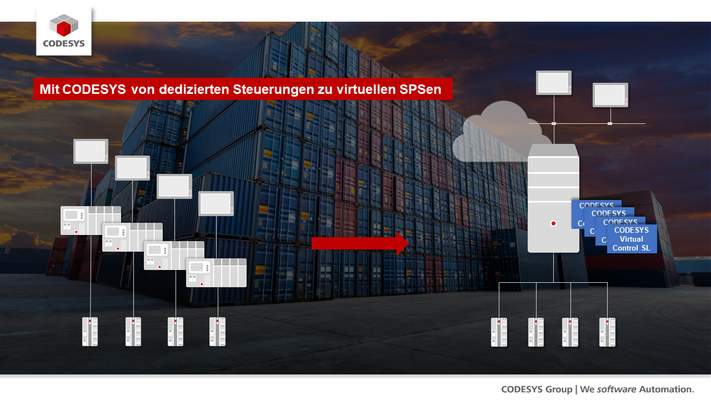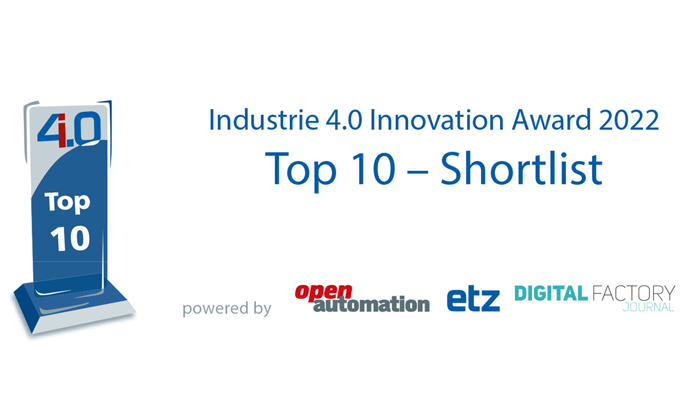Short product description
Due to supply bottlenecks, controllers currently need to be redesigned, and machines and systems need to be converted to control systems that are actually available. The costs incurred are high and stand in the way of other innovations.
The alternative: A SoftPLC that runs hardware-independently - from small, dedicated ARM-based devices to powerful IT server farms, scalable in number and performance as needed. CODESYS Virtual Control SL can do this. The CODESYS SoftPLC that is integrated in several million systems worldwide is now even more hardware-independent and runs on containers (e.g. Docker) and hypervisor platforms. All modern systems support these technologies and enable the use of virtual controllers. On commercial IT systems, depending on their performance, many control instances can be created to replace hardware PLCs. The interaction of the control instances can be coordinated by the CODESYS Automation Server or other well-known tools (e.g. Kubernetes). Access to the field level is provided by high-performance Virtual LAN, which is also available in all industrial devices.
Application benefits: Cost savings through reduced effort for purchasing, installation, cabling and maintenance of controllers, dynamic instantiation, as well as simplified roll-out of PLC applications. And finally: convenient fallback option in the event of delivery bottlenecks.
What makes CODESYS Virtual Control SL an Industry 4.0 innovation?
CODESYS Virtual Control SL uses state-of-the-art IT technologies, such as containers, hypervisor/VM, Kubernetes, as well as OPC UA and web protocols in order to merge IT and OT.
The virtual CODESYS SoftPLC therefore runs on conventional controllers as well as on edge servers, private or even public clouds, depending on the application's requirements for determinism and cycle time. The software defines the function, the hardware provides the resources for it.
Which benefits does CODESYS Virtual Control SL bring?
Cost savings in hardware acquisition, wiring, operation, and maintenance.
- Machine/plant operators can provide and manage the hardware platform themselves.
- Independence from hardware and hardware manufacturers
- Easy scaling through dynamic creation of control instances and the ability to expand software independently of hardware
- Security-by-design by dividing tasks among several independent control instances with powerful intercommunication.
- Interoperability with other services ("micro services")
- Simplified rollout of security updates
- Centralized maintenance and servicing of virtual controllers using technologies and convenience of IT systems, even application updates are possible.
Have the benefits and functionality of CODESYS Virtual Control SL already been proven in practice?
Several large companies are currently testing the use and developing their first applications using CODESYS Virtual Control SL. In an initial system, a plant-level IT server with 128 cores replaces 32 conventional industrial controllers and communicates with 320 bus nodes under real-time conditions. This reduces investment costs and simplifies maintenance, as the server can be smoothly integrated into the company's IT structures. The application runs stable with an 8 ms cycle and a jitter below 50 us across all control instances.
In a second application, Voith Paper has split an existing application into several logical parts and has the logical units run on five process-isolated control instances on an industrial PC. As a result, the machine has a state-of-the-art security design. In addition, the Voith Paper application is now flexibly adaptable and easy to maintain. The individual parts of the application fulfill their tasks independently of each other, can be switched on and off, exchanged, or even expanded. Voith Paper is thus ideally prepared for all future requirements.
This article was published on www.smart-production.de










